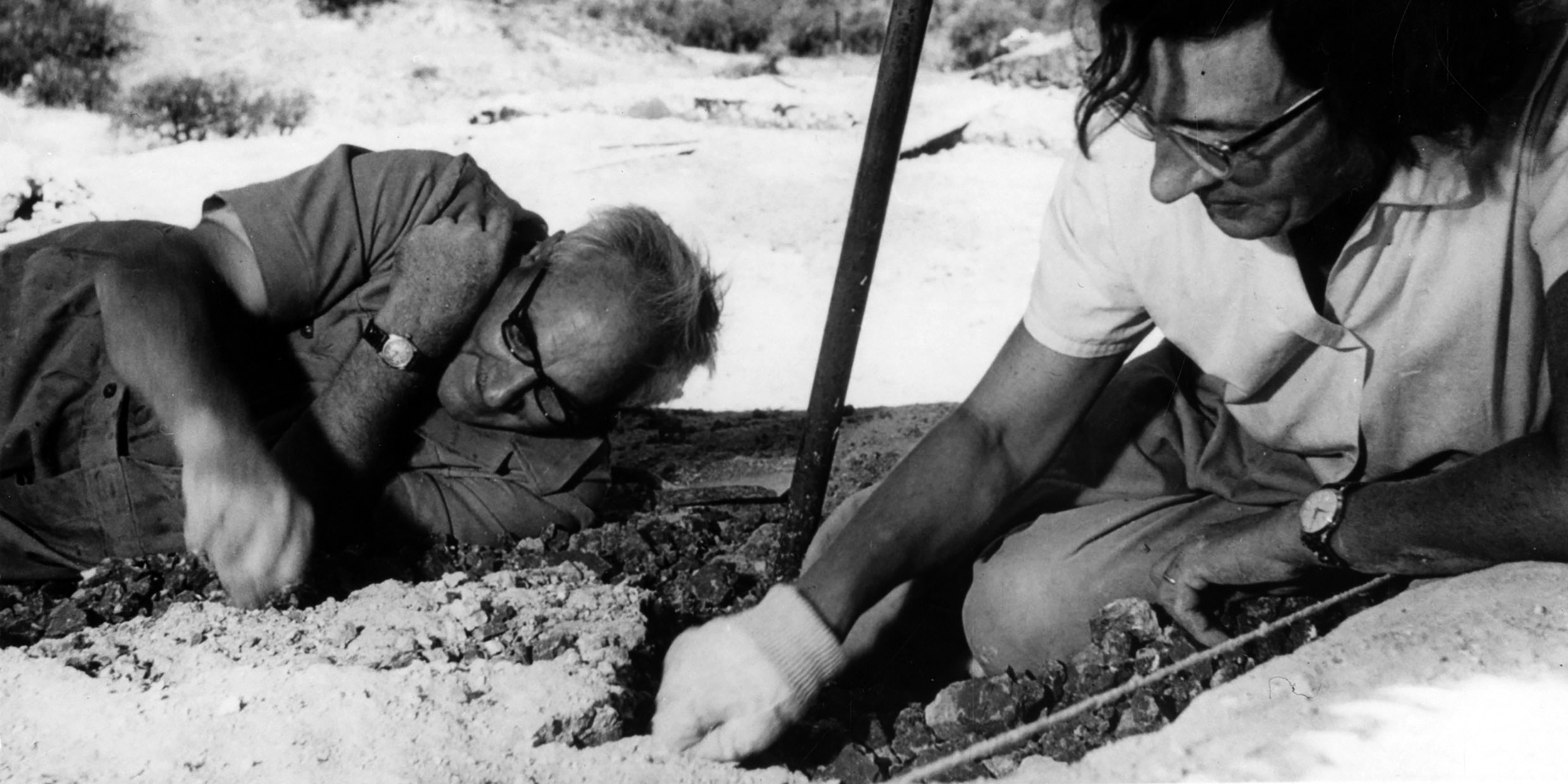Originally published 6 April 1992
There was a time, back in the early 1960s, when I was tempted to abandon physics for paleoanthropology — the study of early humans.
A flood of exciting fossil discoveries — in North Africa, China, and Europe — were adding new details to the story of human evolution, and providing our species with an ever more ancient pedigree. Most inspiring of all was the work of Louis and Mary Leakey in the Olduvai Gorge of East Africa, chronicled in a series of articles in National Geographic.
The Leakeys had found fossils of the earliest known human ancestor, a child who lived nearly 2 million years ago. Other extraordinary discoveries followed. A finger bone, a fragment of jaw, a flake of stone — these were the subtle clues that revealed our past.
And, of course, there was the romance of those photographs in National Geographic: Louis or Mary kneeling in the dusty gorge, carefully removing a sliver of bone from a matrix of rock with camel’s-hair brush and dental pick; supper by lantern light in a tent furnished with collapsible camp chairs and table; extracting the Land Rover from a rainy-season wallow, watched over by a cheetah lounging the the branches of a nearby tree.
The romance lives on
The question of human origins seemed far more interesting than the optical properties of molybdenum films—or whatever it was I was working on at the time. The temptation to quit physics soon passed, but not the romance of paleoanthropology. Throughout the 70s and 80s the drama continued, with more ancient skeletal fragments unearthed in places with magical names — Ngandong in Java, Dali in China, Omo in Ethiopia. Over it all — the slowly accumulating evidence, the furious controversies of interpretation — hung an aura of dust, camp smoke, the scents of exotic blossoms, and smell of tropic rain.
Now comes a wholly new way to tell the story of human origins. No digging in faraway bone quarries. No kit and gear from Abercrombie and Fitch. The new gurus of human evolution wear white lab coats and never come out of their air-conditioned, stainless-steel and glass laboratories in places like Berkeley, Oxford, and New Haven.
They dig in human genes.
In every cell of our bodies we carry genes inherited from our ancestors, a family tree written in DNA. Biochemists read the DNA, and, with the help of computers, try to figure out our family tree. One of their findings sparked a lively controversy.
This was the so-called mitochondrial Eve.
Mitochondria are compartments in cells that “burn” food to produce energy. They contain a parcel of DNA encoding 37 genes. This compares to the approximately 100,000 genes that reside in the cell’s nucleus. Unlike nuclear DNA, mitochondrial DNA is passed down exclusively through the female lineage.
Transcriptions of mitochondrial DNA are now available — listings of all the chemical units along the DNA strand. In 1987, geneticists led by Allan Wilson of the University of California at Berkeley compared mitochondrial DNA of humans from all over the world. A computer program analyzed the differences and inferred a family tree of relationships.
The astonishing conclusion: All humans presently on earth are related through the female lineage to a common ancestor, a woman who lived in Africa approximately 200,000 years ago, dubbed mitochondrial Eve.
The bone-diggers balked at this conclusion. They know from the fossil record that Africa, Europe, and Asia have been populated by early humans for more than a million years. If descendants of mitochondrial Eve moved out of Africa sometime less than 200,000 years ago they must have completely replaced all previous lineages of humans, without any detectable interbreeding.
This extraordinary replacement would surely stand as one of the epic events of human history, and, according to the bone-diggers, is exceedingly unlikely.
The bones, they say, suggest that modern humans evolved in many different regions contemporaneously, over a period of millions of years. Any common female ancestor must have lived 2 million years ago, not 200,000. They see no fossil evidence for a sudden replacement of ancient populations by descendants of a relatively recent Eve.
In recent weeks, the evidence for mitochondrial Eve has been challenged again, this time by geneticists. Alan Templeton of Washington University, and others, have shown that current methods of inferring genetic relationships from DNA by computer are seriously, perhaps fatally, flawed. The present data the computer programs give inconclusive results.
Last word not in yet
For the time being, the bone-diggers seem to have carried the day. But we have not heard the last from geneticists. As more complete genetic data becomes available, including nuclear DNA from humans and other primates, it will be subjected to ever more sophisticated computer analysis. Eve might be resurrected yet.
For us closet paleoanthropologists the controversy is wonderfully exciting. It pits dusty bone-diggers against white-coated biochemists, and the romance of field work in exotic places against the ingenious techniques of molecular biology. At stake is the true story of human evolution.
The theory of a “Mitochondrial Eve” from approximately 200,000 years ago continues to be well supported by DNA evidence, which has led to the Recent African Origin Model—the migration from Africa of anatomically modern humans displacing other archaic human species — becoming more widely accepted among paleoanthropologists. ‑Ed.



